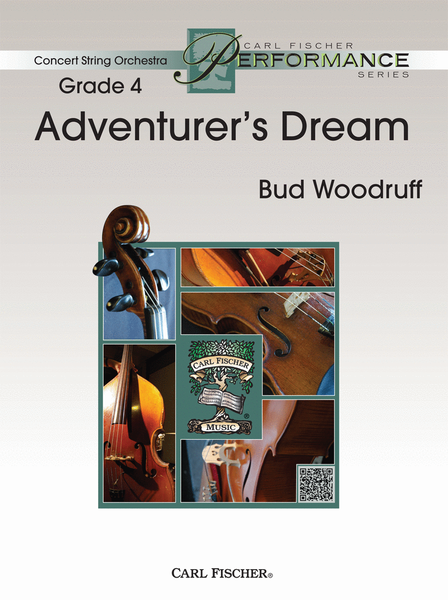Adventurer's Dream
-
Ships in 1 to 2 weeks
Details
Description
SKU: CF.CAS98
Composed by Bud Woodruff. SWS FS. Carl Fischer Concert String Orchestra Series. Set of Score and Parts. With Standard notation. 16+4+16+10+10+10+2+16 pages. Duration 2 minutes, 54 seconds. Carl Fischer Music #CAS98. Published by Carl Fischer Music (CF.CAS98).ISBN 9781491146583. UPC: 680160904082. 9 x 12 inches. Key: G major.
Composer Bud Woodruff takes his musical inspiration for Adventurer's Dream from a rooster named Wally. Mr. Woodruff turns this charming four-note crow into the main thematic material for this piece that is reminiscent of classic movie scores.
The principal theme to this piece has an interesting history . We had a very young rooster named Wally . He had a quite rhythmic four-pitched crow, which was very unique and consistent . As he aged, his crow settled into pitches and the opening melodic figure of this piece is the very pitches and rhythm of Wally’s crow . However, Wally had a touch of a glissando between the last two pitches, which I chose to eliminate, for musicality’s sake . Wally's crow is spun out in different ways and used one way or another in all the sections of the piece . Wally was a very energetic, if not egotistical, young bird, and the piece should be performed accordingly, in a dashing, swashbuckling, heroic style, which Wally would appreciate greatly and agree that it was very appropriate!Rehearsal suggestions:The most difficult thing to accomplish in this work will be deciding if you want the repeated eight-note figure on the string or off the string . I don’t care as long as it sounds staccato . On the string, it needs to be played at or by the camber point; off the string, that point will change depending upon your tempo, but the stroke itself should remain consistent .Although the basses never have the melody, they are a critically important section and can make or break this piece . Their part "counters" the others and fills in rhythmic gaps in a number of places . It needs to be played aggressively and metronomically; they are the glue that makes the piece work . The cellos need to "sing for all they are worth" at m . 63 and do so with joy in their hands . Their theme needs to be very lyrical and smooth . The countermelody at m . 79 should be understated, yet not buried while being intertwined with the cellos’ theme . It harkens back to the main theme and needs a dreamy quality to it .The piece was written as a string orchestra piece . The optional harp part was added later and is not necessary for an effective performance of the piece . However, it does add some extra variety and color to the piece, and reinforces the basses when they fill in those rhythmic gaps to which I referred earlier .A very special thanks goes to harpist Jane Minnis for the great and insightful suggestions for this part .Thank you for playing this piece . I trust you will enjoy it as much as I do .
About Carl Fischer Concert String Orchestra Series
This series of pieces (Grade 3 and higher) is designed for advancing ensembles. The pieces in this series are characterized by:
- Expanded use of rhythms, ranges and keys but technical demands are still carefully considered
- More comprehensive bowing techniques
- Viola T.C. included
- Careful selection of keys and degree of difficulty for advancing musicians

 Share
Share